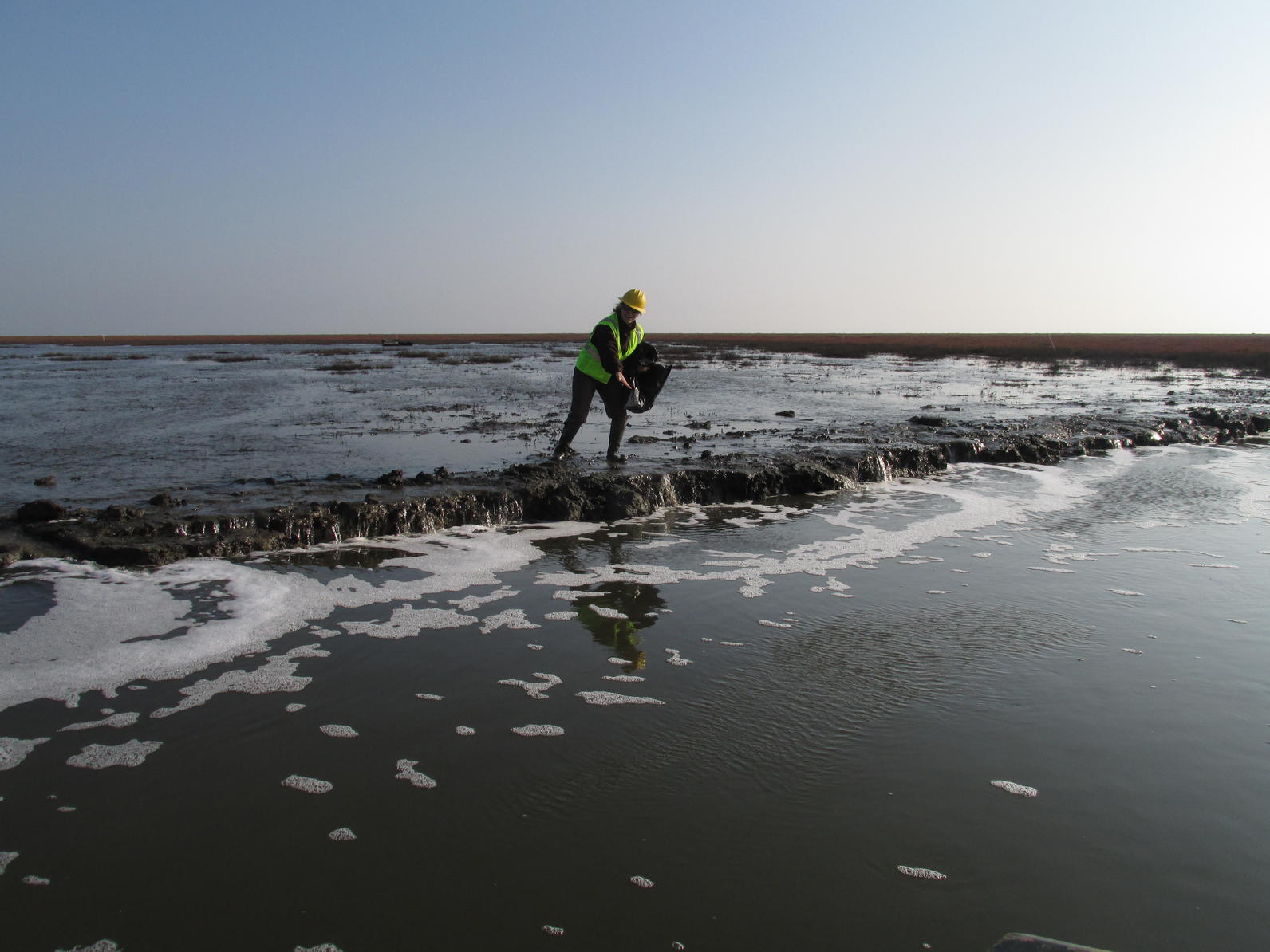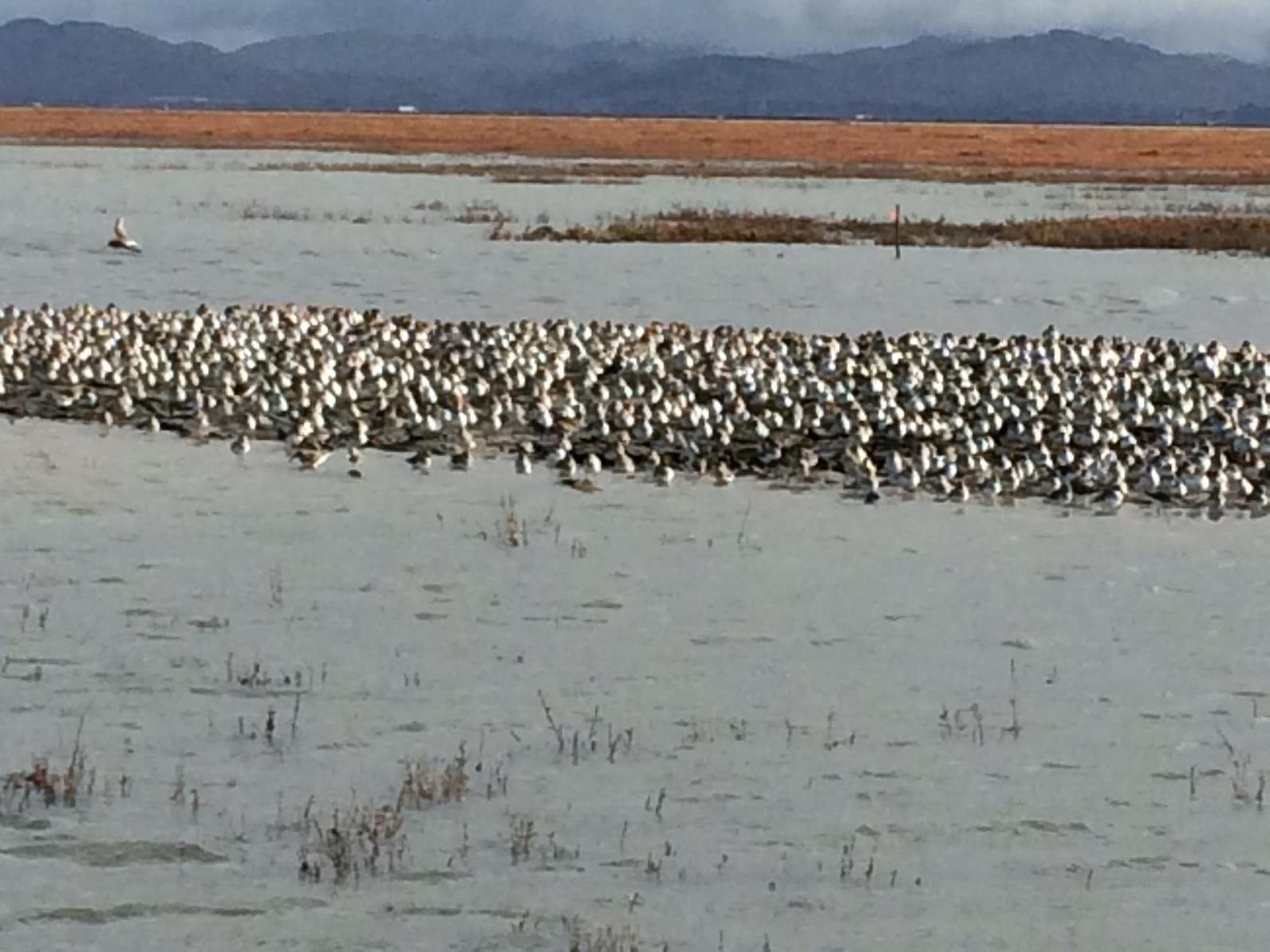
Tidal marshes need to "breathe" water in and out to function properly. When they don't, water stagnates and habitat degrades to the point where it is completely worthless to birds and wildlife. That's what has happened to Sonoma Creek wetland over the last decades. Water gets trapped and everything just turns into a decomposing muddy mess with mosquitos.
As we've discussed before, one of the goals of our enhancement project on Sonoma Creek has been to created new channels for the water to flow in and out, and create an environment where new channels can form on their own. We've dug out several new channels already, and the recent king tide in San Francisco Bay showed how well the new marsh functions.
The king tide also showed how well we're doing creating elevated zones for birds and wildlife to move to as water levels rise. This is not only a strategy to address expected sea level rise in San Francisco Bay, but also to help wildlife during these super high tide events. This worked spectacularly, as these elevated zones got a lot of use during the king tide.

Sonoma Creek is coming alive after a long dormant period. This is very exciting for us -- and for the birds.
By Garrison Frost
Monthly Giving
Our monthly giving program offers the peace of mind that you’re doing your part every day.




